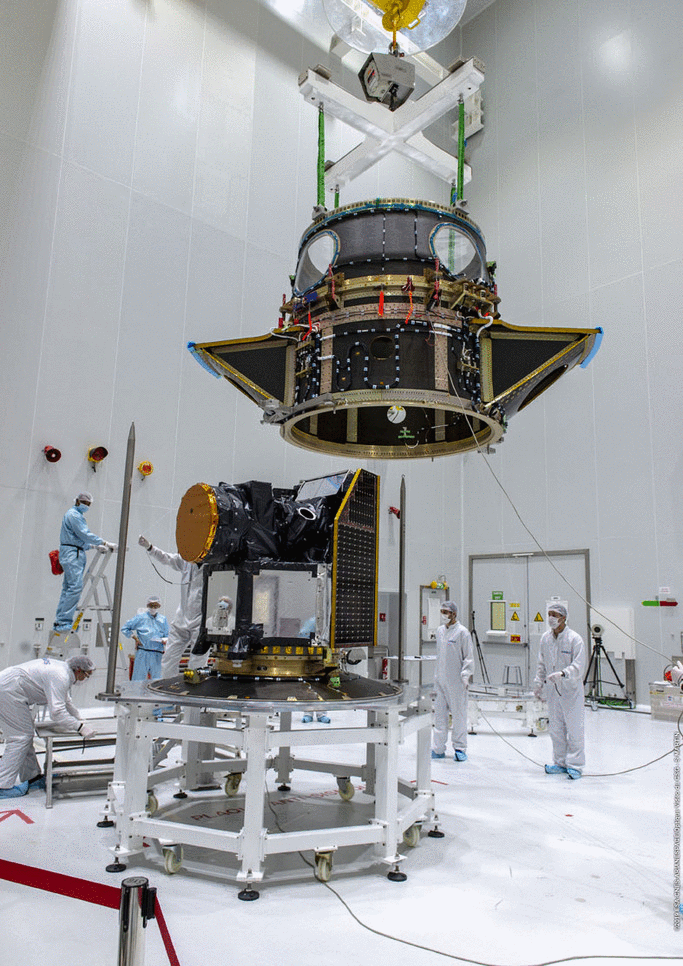
Image:
At Europe’s Spaceport in Kourou, French Guiana, ESA’s Characterising Exoplanet Satellite, Cheops, is being encapsulated into the flight adapter of the Soyuz-Fregat rocket that will lift it into space on 17 December.
It’s an intense period at the Spaceport, where engineers from ESA, Airbus and CNES have been preparing for launch since the satellite arrival in mid-October.
This sequence of photographs, taklen on 29 November, shows the Souyuz Arianespace System for Auxiliary Payloads (ASAP-S) being carefully and progressively aligned to Cheops, then lowered onto and finally mated to the conic adapter. The mechanical integration is completed by fastening the fixation bolts.
Cheops is ESA’s first mission dedicated to the study of extrasolar planets, or exoplanets. It will observe bright stars that are already known to host planets, measuring minuscule brightness changes due to the planet’s transit across the star’s disc.
The mission will target stars hosting planets in the Earth- to Neptune-size range, yielding precise measurements of the planet sizes. This, together with independent information about the planet masses, will allow scientists to determine their density, enabling a first-step characterisation of these extrasolar worlds. A planet’s density provides vital clues about its composition and structure, indicating for example if it is predominantly rocky or gassy, or perhaps harbours significant oceans.
The first small, or S-class, mission in ESA’s science programme, Cheops is a partnership between ESA and Switzerland, with a dedicated consortium led by the University of Bern, and with important contributions from 10 other ESA Member States.
Cheops paves the way for the next generation of ESA’s exoplanet satellites, with two further missions – Plato and Ariel – planned for the next decade to tackle different aspects of the evolving field of exoplanet science. Together, these missions will keep the European scientific community at the forefront of exoplanet research well beyond the next decade, and will build on answering the fundamental question: what are the conditions for planet formation and the emergence of life?
Click here for original story, Exoplanet satellite encapsulated
Source: ESA Space News